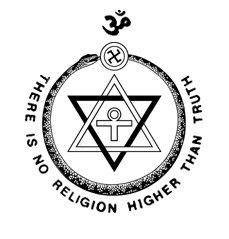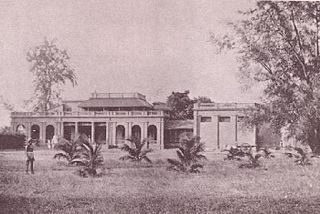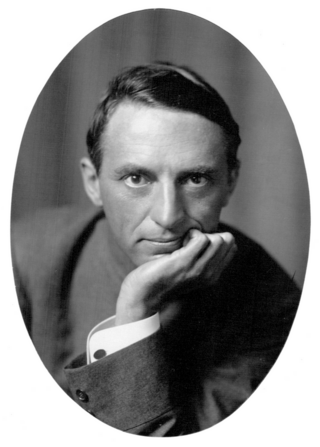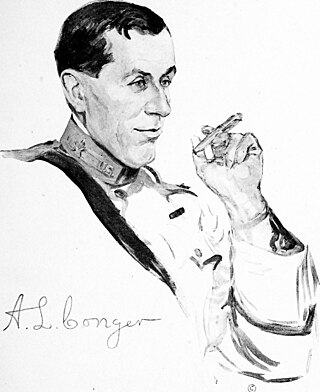External links
- www.theosociety.org
- Articles by Knoche
- Ihr Werk "Die Mysterienschulen" online (pdf-Dokument, 624 kB) German
| Part of a series on |
| Theosophy |
|---|
 |
Theosophists
|
Concepts |
Publications |
Related |
| International | |
|---|---|
| National | |
Grace F. Knoche | |
|---|---|
| Predecessor | James A. Long |
| Successor | Randell Grubb |
Grace F. Knoche (February 15, 1909 – February 18, 2006) was leader of the Theosophical Society with international headquarters at Pasadena, California from 1971. The Society was founded in 1875 in New York City to promote universal brotherhood, the study of philosophy, religion, and science, and to investigate the powers innate in nature and man.
Knoche was born at Society's headquarters, then at Point Loma, California, and educated at its schools which pioneered a rounded curriculum including art, music, and drama, completing her education at Theosophical University (PhD 1944). In the 1930s and 1940s she worked at the headquarters in several capacities including the secretarial and editorial staffs. At various times from 1933 to 1946 she also taught violin, Greek, Hebrew, Sanskrit, Bible translation, and Qabbalah at Theosophical University, as well as sculpture and painting at the Lomaland School. After Colonel Arthur L. Conger became leader of the Society in 1945, Knoche became his private secretary and subeditor of The Theosophical Forum. On Conger's death in 1951, she continued as private secretary to the next leader, James A. Long, and was subeditor of Sunrise magazine until his death in 1971.
As leader, Knoche emphasized theosophy as a practical and compassionate way of living, believing that "mankind is a living brotherhood of human souls, and how and what any one person thinks or does has its inevitable effect on the totality of world thought." She encouraged mutual respect and cooperation among the members of various theosophical organizations, while recognizing the value of each organization as an independent entity. She put special emphasis on the publications program, in print and online, making the full text of virtually all the Society's press publications freely available on the internet. Besides scores of articles in theosophical magazines, especially Sunrise: Theosophic Perspectives , she wrote three books: To Light a Thousand Lamps, The Mystery Schools, and Theosophy in the Qabbalah (unpublished).
| Part of a series on |
| Theosophy |
|---|
 |

Helena Petrovna Blavatsky, often known as Madame Blavatsky, was a Russian and American mystic and author who co-founded the Theosophical Society in 1875. She gained an international following as the leading theoretician of Theosophy.

The Theosophy Society was founded by Helena Petrovna Blavatsky and others in 1875. The designation 'Adyar' is sometimes added to the name to make it clear that this is the Theosophical Society headquartered there, after the American section and some other lodges separated from it in 1895, under William Quan Judge. In 1882, its headquarters moved with Blavatsky and president Henry Steel Olcott from New York to Adyar, an area of Chennai, India.

The Theosophical Society is the organizational body of Theosophy, an esoteric new religious movement. It was founded in New York City, U.S. in 1875. Among its founders were Helena Blavatsky, a Russian mystic and the principal thinker of the Theosophy movement, and Henry Steel Olcott, the society's first president. It draws upon a wide array of influences among them older European philosophies and movements such as Neoplatonism and occultism, as well as parts of Asian religious traditions such as Hinduism, Buddhism, and Islam.

The Theosophical Society (Pasadena) is a branch of Theosophy based in Pasadena, California. It claims to be the successor organization to the original Theosophical Society founded by Helena Petrovna Blavatsky and others in 1875 in New York City. Currently is the second largest Theosophical group in members and international reach after the Theosophical Society Adyar.

Ascended masters in a number of movements in the theosophical tradition are held to be spiritually enlightened beings who in past incarnations were ordinary humans, but who have undergone a series of spiritual transformations originally called initiations.

Katherine Augusta Westcott Tingley was a social worker and prominent Theosophist. She led the American Section of the Theosophical Society after W. Q. Judge. She founded and led the Theosophical community Lomaland in Point Loma, California.

The Theosophical Society in America (TSA) is a member-based nonprofit organization dedicated to the teaching of Theosophy and affiliated with the international Theosophical Society based in Adyar, Chennai, India. The name "Theosophical Society in America" was legally adopted by the American Theosophical Society in 1934. Previously, other organizations had used the same name during the years 1895–98 and 1898–1908.

Isis Unveiled: A Master-Key to the Mysteries of Ancient and Modern Science and Theology, published in 1877, is a book of esoteric philosophy and Helena Petrovna Blavatsky's first major work and a key text in her Theosophical movement.

Kenneth Vennor Morris, sometimes using the Welsh form of his name Cenydd Morus, was a Welsh author and theosophist. Born in South Wales, he relocated to London with his family as a child, and was educated at Christ's Hospital. In 1896, he lived in Dublin for a while, where he became friends with George William Russell. From 1908 to 1930, Morris lived in California as a staffperson of the Theosophical Society headquarters at Point Loma. The last seven years of his life were spent back in his native Wales, during which time he founded seven Welsh theosophical lodges. Morris was a friend of Talbot Mundy, and the two writers often commentated on each other's work in magazine The Theosophical Path.

Morya, also spelt Maurya, is one of the "Masters of the Ancient Wisdom" within modern Theosophical beliefs. He is believed by followers of Theosophism to be one of the Mahatmas who inspired the founding of the Theosophical Society and was engaged in a correspondence with two English Theosophists living in India, A. P. Sinnett and A. O. Hume. The correspondence was published in 1923 by A. Trevor Barker, in the book The Mahatma Letters to A. P. Sinnett.

Arthur Latham Conger Jr. was an officer in the United States Army, a writer and editor. A veteran of the Spanish–American War, Philippine–American War, Boxer Rebellion, Pancho Villa Expedition, and World War I, he attained the rank of colonel and devised the World War I deception known as the Belfort Ruse. A noted theosophist, he served as president of Theosophical Society Pasadena.

Lomaland was a Theosophical community located in Point Loma in San Diego, California from 1900 to 1942. Theosophical Society leader Katherine Tingley founded it in 1900 as a school, cultural center, and residential facility for her followers. The American headquarters of the Theosophical Society Pasadena was also situated there. The facility was important to the growing city of San Diego for its cultural offerings, and it left a lasting legacy in its campus which still retains many of the unique architectural features of the original Lomaland. The residents of Lomaland also transformed their Point Loma neighborhood by planting so many trees, orchards and shrubs that the formerly barren neighborhood is now known as the "Wooded Area".

The Theosophical Society Point Loma was based at the Theosophical community of Lomaland in the Point Loma district of San Diego, California from 1900 to 1942, and the international headquarters of a branch of the Theosophical Society from 1900 to 1942. It moved to Covina in Los Angeles County in 1942 and was the branch's international headquarters to 1945, when it moved to Pasadena, California and became the Theosophical Society Pasadena, the branch's current international headquarters.

Report of the committee appointed to investigate phenomena connected with the Theosophical Society, commonly called the Hodgson Report was an 1885 report by the Society for Psychical Research (SPR) on Helena Blavatsky and purportedly apported Mahatma Letters.

The Mahatma Letters to A.P. Sinnett is a book published in 1923 by A. Trevor Barker. (ISBN 1-55700-086-7) According to Theosophical teachings, the letters were written between 1880 and 1884 by Koot Hoomi and Morya to A. P. Sinnett. The letters were previously quoted in several theosophical books, but not published in full. The letters were important to the movement due to their discussions on the theosophical cosmos and spiritual hierarchy. From 1939, the original letters were in the possession of the British Museum but later the British Library.
Master Jesus is the theosophical concept of Jesus in theosophy and the Ascended Master Teachings.
The Blavatsky Lodge, officially The Blavatsky Lodge of the Theosophical Society, was an English Theosophical Society founded by Helena Blavatsky and 13 other members.

Geoffrey Hodson was an occultist, Theosophist, Co-Freemason, mystic, Liberal Catholic priest, philosopher and esotericist, and a leading light for over 70 years in the Theosophical Society.
The Great White Brotherhood, in belief systems akin to Theosophy and New Age, are said to be perfected beings of great power who spread spiritual teachings through selected humans. The members of the Brotherhood may be known as the Masters of the Ancient Wisdom, the Ascended Masters, the Church Invisible, or simply as the Hierarchy. The first person to talk about them in the West was Helena Petrovna Blavatsky (Theosophy), after she and other people claimed to have received messages from them. These included Helena Roerich, Alice A. Bailey, Guy Ballard, Geraldine Innocente, Elizabeth Clare Prophet, Bob Sanders, and Benjamin Creme.

Theosophy is a religion established in the United States during the late 19th century. It was founded primarily by Helena Blavatsky and draws its teachings predominantly from Blavatsky's writings. Categorized by scholars of religion as both a new religious movement and as part of the occultist stream of Western esotericism, it draws upon both older European philosophies such as Neoplatonism and Indian originated religions such as Hinduism and Buddhism.